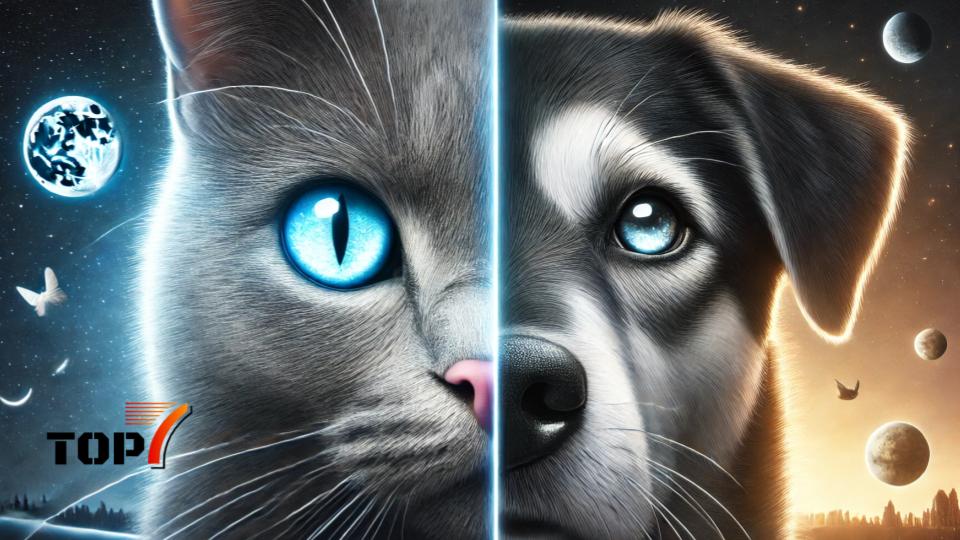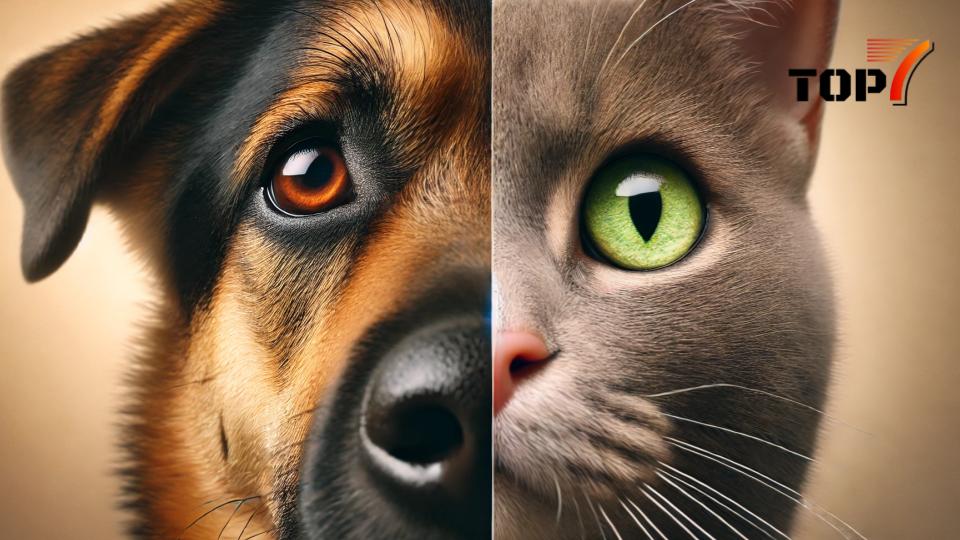Ever wondered what the world looks like through the eyes of your furry companion? While both cats and dogs have remarkable visual abilities, they experience the world very differently — from colors and movement to how they see in the dark. Let’s explore the top 7 key differences between cat and dog vision that might surprise you.
1. Cats See Better in the Dark
When it comes to night vision, cats are the clear winners. Their eyes are built for low-light conditions. Thanks to a reflective layer behind the retina called the tapetum lucidum, cats can see up to six times better than humans in the dark — and better than dogs, too. This is why your cat may come alive at night and hunt (or play) while you’re asleep.
2. Dogs Detect Motion More Easily
While cats are built for stealth and low light, dogs are natural motion detectors. They’re especially good at spotting moving objects, even from a distance. This is tied to their history as pack hunters — movement means prey. So if your dog barks at a squirrel from across the park, it’s those motion-sensitive eyes doing their job.
3. Cats Have a Wider Field of View
Cats typically have a visual field of around 200 degrees, giving them excellent peripheral vision. That’s great for spotting things sneaking up on them. Dogs vary depending on the breed, but most dogs have a field of view of 240–270 degrees — even wider! However, this can mean less overlap in both eyes, so their depth perception isn’t as strong as a cat’s.
4. Dogs Are Nearsighted, Cats Are Better at Mid-Distance
Dogs generally don’t see well up close. Most are considered nearsighted, meaning they can’t focus clearly on things right in front of them. Cats, on the other hand, have better clarity at mid-range distances — perfect for stalking and pouncing on prey. Neither sees as sharply as humans, but cats have the edge when it comes to clarity.
5. Cats See a Bit More Color Than Dogs
Contrary to the myth, dogs aren’t completely colorblind — but their color range is limited. Dogs see mostly in shades of blue and yellow, while red and green appear more like grays or browns. Cats see a similar limited range, but they might detect slightly more shades of green and blue. Still, neither sees the full-color spectrum like humans do.
6. Dogs Have a Better Sense of Depth — Sometimes
Depending on the breed, some dogs have excellent depth perception, especially those with front-facing eyes (like pugs or collies). This allows better focus and binocular vision. Cats, with their large forward-facing eyes, also have great depth perception — essential for precise jumping and hunting. But while cats rely more on sight, dogs often rely on smell and hearing to fill in what they don’t see.
7. Cats Have Vertical Pupils, Dogs Have Round Ones
One of the most noticeable differences is the shape of their pupils. Cats have vertical slit pupils, which help them control light more effectively and enhance their focus during hunting. Dogs typically have round pupils, similar to humans, though some breeds may show slight variations. This difference affects how each species adapts to light and tracks movement.
Final Thoughts: Two Unique Ways of Seeing the World
Cats and dogs don’t just behave differently — they see the world in entirely unique ways. While cats are nighttime ninjas with excellent precision and stealth, dogs are day-friendly, motion-loving companions with keen awareness of movement and sound. Understanding these differences can help you interact better with your pet, respect their instincts, and enrich their environment in ways that suit how they experience the world.
See you.
Read also:

We are a team passionate about Time management and productivity. Our mission is help you to boost efficiency.



